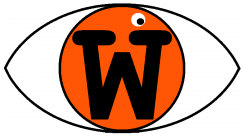| Worth seeing: | for Denis Villeneuve's ambitious vision of how to bring Frank Herbert's supposedly unfilmable novel to its dramatic conclusion |

| Director: | Denis Villeneuve |
| Featuring: | Timothée Chalamet, Zendaya, Anya Taylor-Joy, Austin Butler, Charlotte Rampling, Christopher Walken, Dave Bautista, Florence Pugh, Javier Bardem, Josh Brolin, Léa Seydoux, Leon Herbert, Rebecca Ferguson, Souheila Yacoub, Stellan Skarsgard, Stephen McKinley Henderson, Tim Blake Nelson, Tim Blake Nelson. Anya Taylor-Joy |
| Length: | 166 minutes |
| Certificate: | 12A |
| Country: | Canada, US |
| Released: | 1st March 2024 |
WHAT’S IT ABOUT?
The Harkonnen are now in full control of the spice-rich planet of Arrakis, having wiped out the Atreides – or so they think.
Paul Atreides (Timothée Chalamet) – the heir to his murdered father’s dynasty – and his mother Jessica (Rebecca Ferguson) have survived a brutal attack and are seeking refuge with the nomadic Fremen people, led by Stilgar (Javier Bardem).
Stilgar is one of many to believe that Paul is the prophet who’s been promised to the people to save them from the Harkonnen.
Paul takes some persuading himself – and then has to persuade others – when he accepts his fate and confronts the prophecy head-on, as a new Harkonnen baron, Feyd-Rautha (Austin Butler), rises through his own ranks to take control of the planet.
With the backing of the Fremen fighters and the mysticism of his mother’s coven of soothsayers, the stage is set for a confrontation between Paul and Feyd-Rautha, as the future of the planet rests in their hands.
WHAT’S IT LIKE?
When Denis Villeneuve delivered Part One of his adaptation of Frank Herbert’s supposedly unfilmable novel, it wasn’t even certain that he’d get a chance to finish the story. The success of that film – both commercially and critically – made Part Two inevitable and the wait is worth it.
While Part One did a remarkable job of introducing newcomers to Herbert’s future world, Part Two launches straight into the story, understandably assuming prior knowledge of the epic story which is unfolding. TV series generally have a “previously” segment at the start of each episode, when it might be no more than a week since you saw the last one, so trusting audiences to have done their homework, more than two years after the first “episode” is certainly quite trusting.
But in truth, you don’t need to remember every detail of Part One to work out what’s going on in Part Two. It sets out towards a clearly signposted destination and travels there along a fairly pedestrian route – apart from the odd scene involving rather spectacular giant sandworm surfing – one of Villeneuve’s many dazzling visual touches.
Christopher Nolan-style, he even pops into black-and-white for one sequence, as he introduces a key new character. Elsewhere, colour is effectively used – against the sepia-tones of the sandy wilderness and the gloomy caves and corridors, the occasional burst of a bold blue shudders your senses. Like the first instalment of the story, the landscapes are as visually stunning as they are desolate and dramatic.
As Part Two thunders towards its conclusion, the complexity of the narrative feels almost rushed, which is odd for a pair of films totalling five and a half hours – as if Villeneuve knew he couldn’t tell the story in one film, but realised, too late, that there wasn’t quite enough there to stretch it to a third.
With the pacing consequently feeling a little off, at times some sequences drag a little, while others feel a little squeezed.
The overall story feels a bit like Star Wars doing the bible, which is open to many levels of interpretation – with fascist dictators, guerrilla resistance fighters and religious fundamentalism, all adding to an oddly topical feel.
After committing five and a half hours to this epic saga, some viewers might find the conclusion to be frustratingly inconclusive – although it leaves open the way for a third film, to take in Herbert’s second Dune novel.
